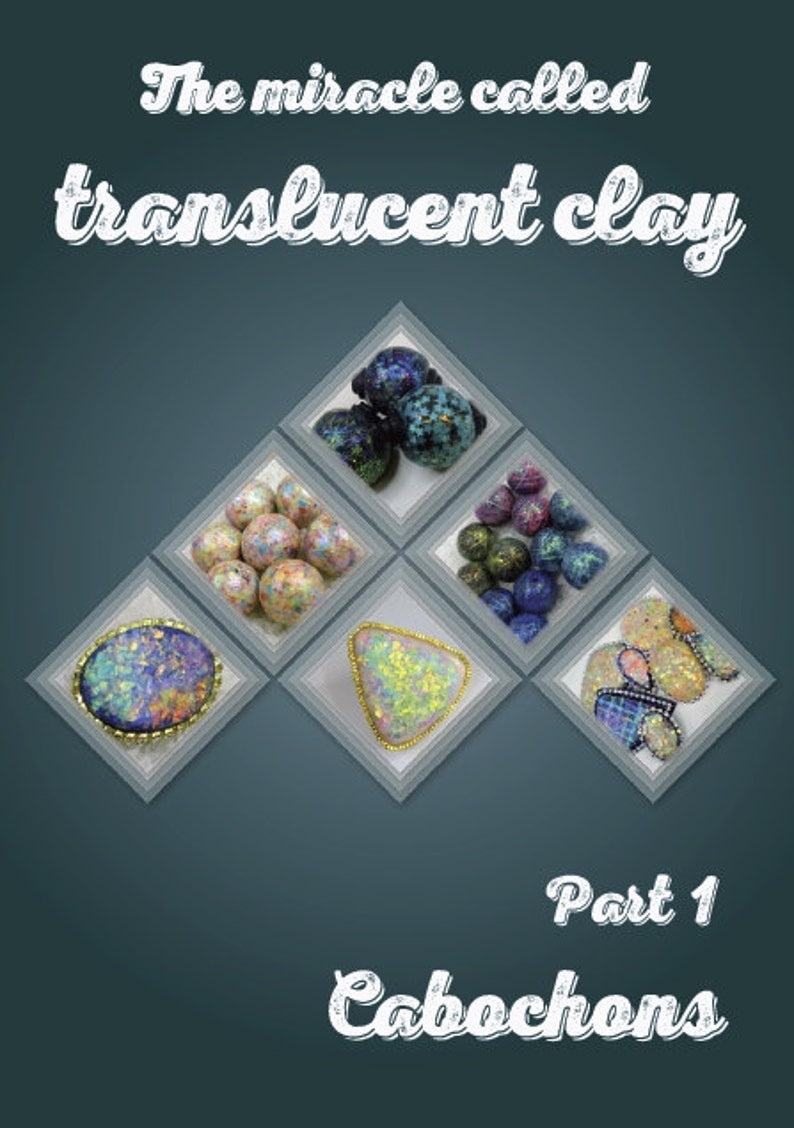

#TRANSLUCENT POLYMER CLAY AND SUPER HEAT FULL#
Several brands of polymer clay have a full range of colored translucent polymer clay.īefore I get into the specifics of specifically colored translucent polymer clay brands, let me mention that you can color regular translucent clay any color that you’d like by adding various colorants (such as regular clay, paint, ink, pigment, glitter, and more). But translucent polymer clay doesn’t have to be neutral-colored. You can see a comparison of major brands here, demonstrating their relative clarity. Most (but not all) brands of polymer clay have a translucent clay in their line. – An extender for when I want more of a colour clay than I have on hand.Translucent polymer clay is similar to regular, colored polymer clay except that it is made with a base that turns more clear when it’s baked. – Canework, particularly (a) ghost canes with geometric designs that I can overlay on other designs, (b) kaleidoscope canes (also great fun!), and (c) background/filler or to provide “windows” in more traditional canes. I often use the same techniques that I’d apply when reproducing “real” semi-precious stones, but with different colours, and make up my own kinds of stones. Faux semi-precious stones are great fun to make and there are almost infinite possibilities. – Faux semi-precious stones such as faux marble, faux opal, faux agate, faux jade, etc., or to help things like faux lapis lazuli look more realistic. I mainly use translucent clay for three things: Or I just use Kato Clear Medium instead! D) (If I really need something clearer than Kato translucent, I sometimes bake a base Kato item at its preferred higher temperature, then add a finishing layer including the translucent bits in Premo Frost, and bake the whole thing again at Premo’s temperature. Kato is noticeably whiter, Premo Frost is noticeably clearer, so the brand (or mix) I use depends on what I want to do.Ī complicating factor is that Kato is much, much stronger when baked at a higher temperature than that recommended for Premo, so I can’t always just use Premo Frost for the translucent bits. I use Kato for everything except for translucent where I also use Premo Frost. So which brand of translucent polymer clay do you prefer, and why? Also… please share your stories about cool stuff you have made using translucent polymer clay.

I once said, that if I was stranded on a deserted island and could have only three polymer clay supplies, they would be a blade, a pasta machine and a HUGE block of translucent clay! I guess I’d have to do my baking on a black rock in the sun, or over the open fire… Survivor style HeHe! You can also use translucent clay to create some pretty cool tinting and illumination effects using alcohol inks and powdered pigments. Translucent clay can also be used for making: Just look at the variegated sculpted Rose bead in the photo above and you can see just how much light can penetrate even a 50:50 mix of translucent and regular opaque polymer clay. This adds a ‘depth’ quality that you simply can’t achieve using other types of non-polymer clays, such as earth-based ceramic clay. However, when using translucent for filling in polymer clay background spaces in flower canes and ghost canes, you can get close-to-invisible by cutting your cane slices very thin.Īnother feature to translucent polymer clay is the ability for light to penetrate the surface. Some comparison notes are posted in this article: Translucent Sculpey Clay, Fimo Clay, Premo, Cernit, KatoĪt this time, none of the manufacturers make a totally clear translucent polymer clay (not sure if that would even be possible). Although each one is similar, there are some differences too. Whether It’s Fimo, Kato, or Premo Sculpey… Translucent Clay is an Essentiality!Įvery brand of polymer clay has a their own version of translucent.


 0 kommentar(er)
0 kommentar(er)
